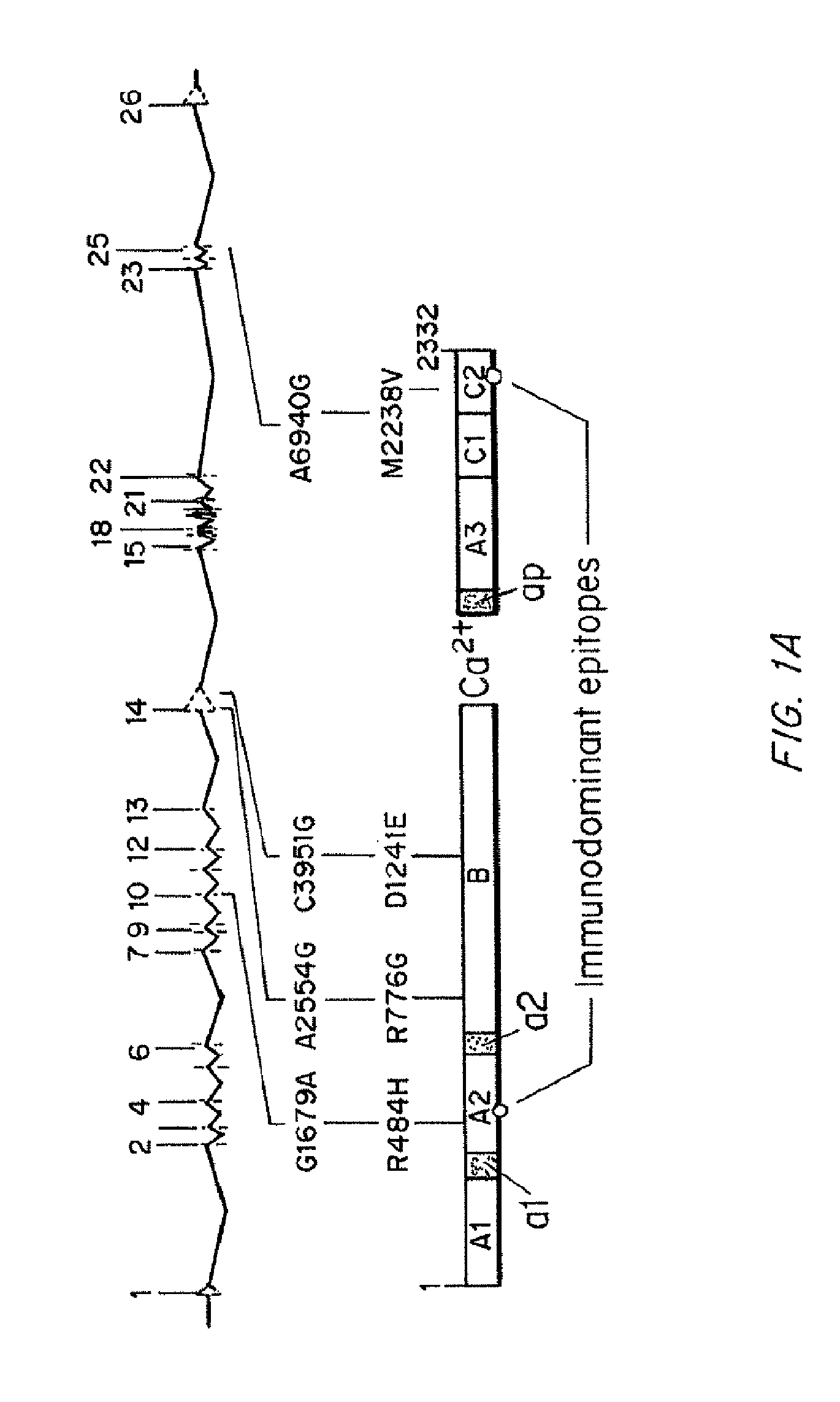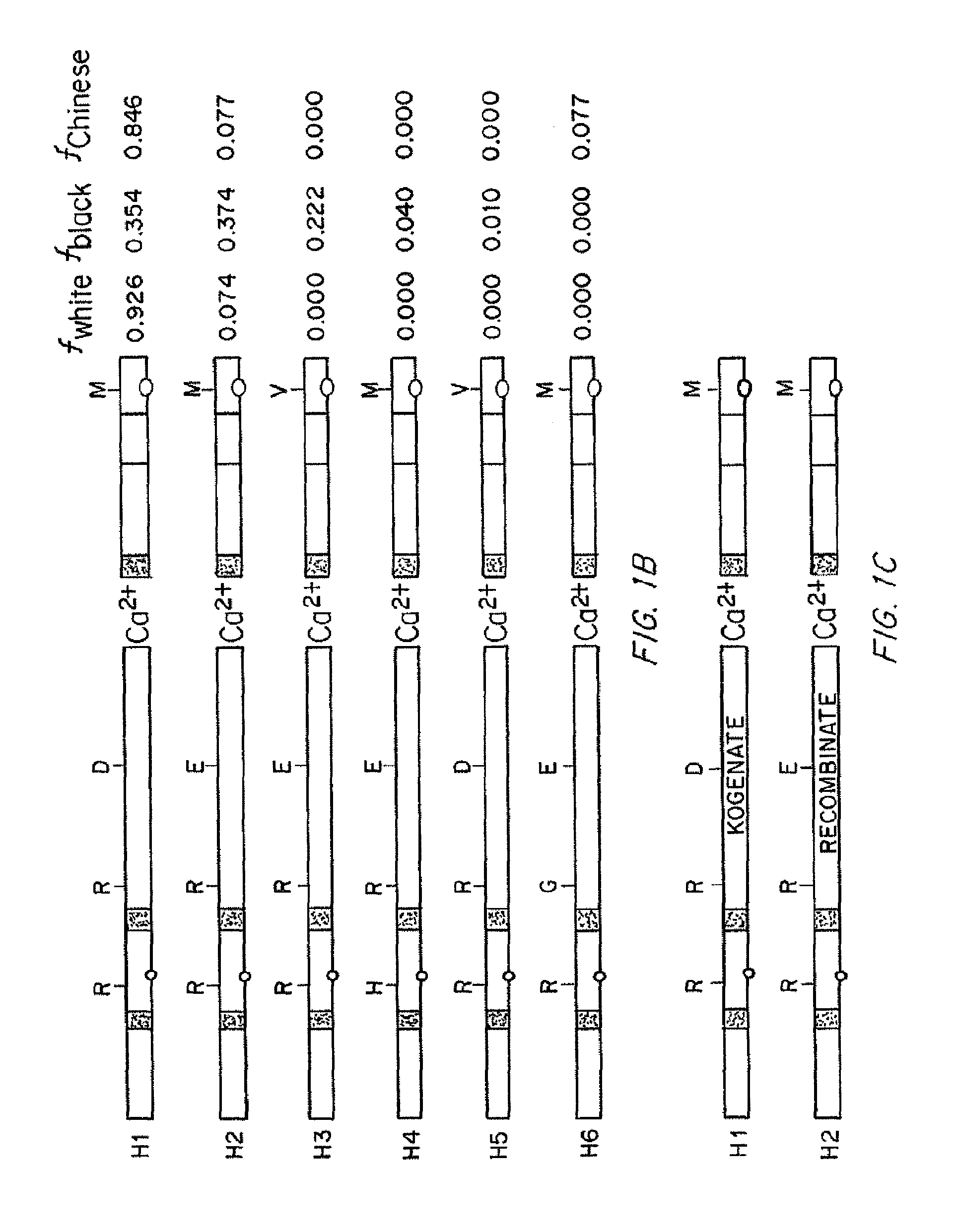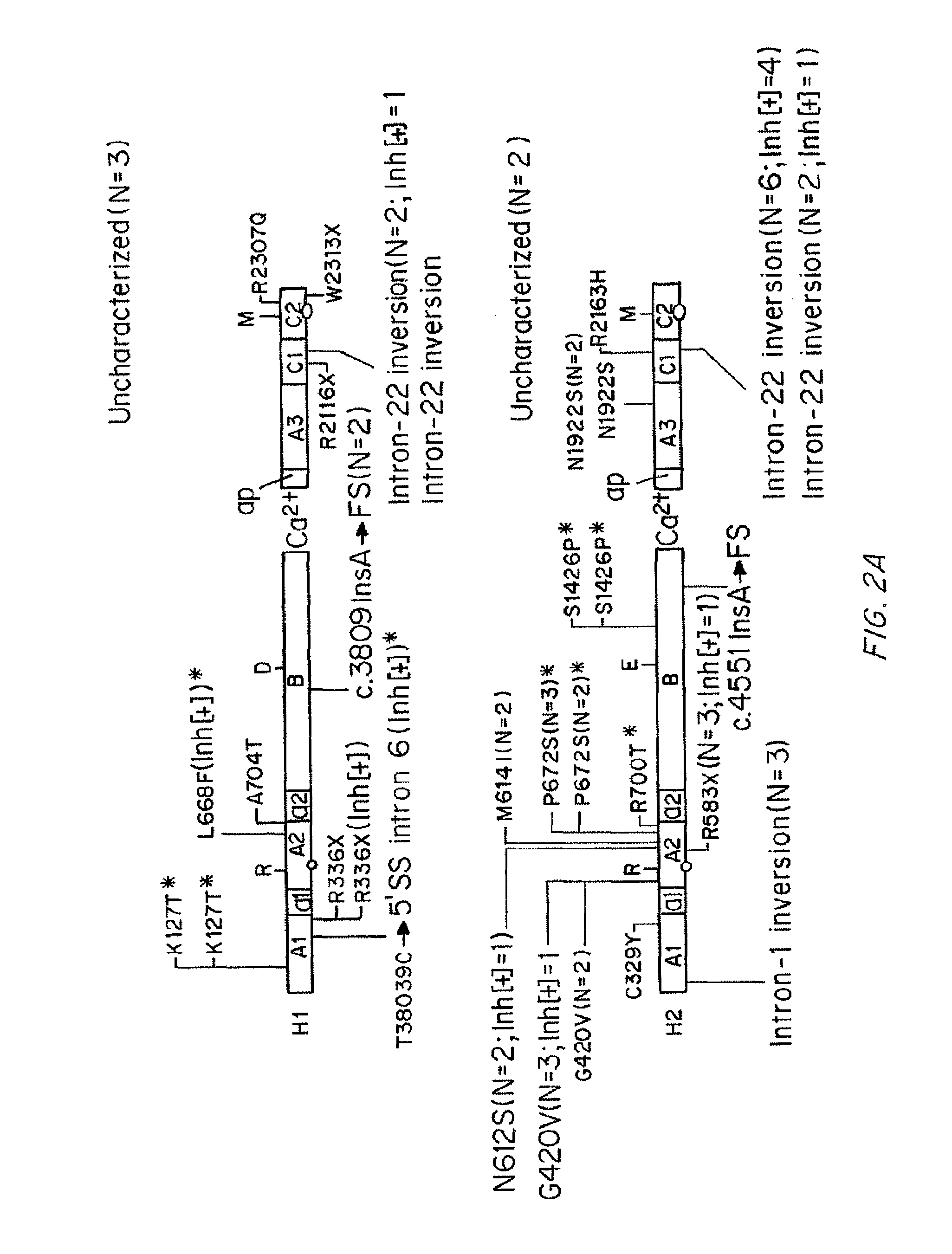Compositions and Methods of Treatment of Black Hemophiliac Patients
- Summary
- Abstract
- Description
- Claims
- Application Information
AI Technical Summary
Benefits of technology
Problems solved by technology
Method used
Image
Examples
example 1
Determination of Association of Haplotype and Ethnicity with Different Mutations Causing Hemophilia
[0070]Black patients with hemophilia A (factor VIII deficiency) are twice as likely as white patients to produce inhibitors against factor VIII proteins given as replacement therapy. There are six wild-type factor VIII proteins, designated H1 through H6, but only two (H1 and H2) match the recombinant factor VIII products used clinically. H1 and H2 are found in all racial groups and are the only factor VIII proteins found in the white population to date. H3, H4, and H5 have been found only in blacks. It was hypothesized that mismatched factor VIII transfusions contribute to the high incidence of inhibitors among black patients.
[0071]Methods
[0072]The factor VIII gene (F VIII) in black patients with hemophilia A was sequenced to identify causative mutations and the background haplotypes on which they reside. Results from previous Bethesda assays and information on the baseline severity of...
PUM
 Login to View More
Login to View More Abstract
Description
Claims
Application Information
 Login to View More
Login to View More - R&D
- Intellectual Property
- Life Sciences
- Materials
- Tech Scout
- Unparalleled Data Quality
- Higher Quality Content
- 60% Fewer Hallucinations
Browse by: Latest US Patents, China's latest patents, Technical Efficacy Thesaurus, Application Domain, Technology Topic, Popular Technical Reports.
© 2025 PatSnap. All rights reserved.Legal|Privacy policy|Modern Slavery Act Transparency Statement|Sitemap|About US| Contact US: help@patsnap.com



